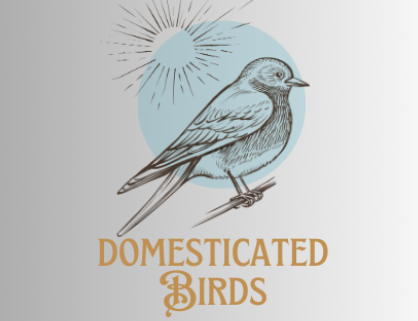Discussing Rhode Island red origin and history, Appearance, all about eggs, Rhode Island red rooster at all ages, rooster vs hen faceoff, Rhode Island red chicks (from caring to buying) and many more must know things in detail.
Introduction
This is more than just a chicken breed; it’s a symbol of American agricultural success and heritage. Known for their hardiness, prolific egg production, and striking appearance, Rhode Island is a favorite among poultry enthusiasts and commercial farmers alike.
Rhode Island Red Origin and History
Which Year Did It Originate?
The Rhode Island chicken originated in the mid-19th century, with the first recognized breed emerging around 1854.
History and the Name of the Scientists
The Rhode Island chicken breed was developed in the states of Rhode Island and Massachusetts, USA. The breed’s development was a result of crossbreeding Malay chickens with Brown Leghorn, Cochin, and Java breeds. This selective breeding was spearheaded by poultry farmers, with significant contributions from William Tripp and John Macomber.
Is Rhode Island chicken a Hybrid or Real?
Rhode Islands are considered a pure breed, not a hybrid. Although they were created through crossbreeding initially, the consistent characteristics and lineage have established them as a distinct and recognized breed.
Breeding Rhode Island chicken
Breeding these involves selecting robust, healthy birds that exhibit the desired traits of hardiness, prolific egg production, and appealing physical appearance. Maintaining genetic diversity is crucial to avoid inbreeding issues. Selecting breeding stock with a good mix of genetics helps ensure the vitality and continued productivity of the breed.
Rhode Island Red Appearance
Rhode Island Red Rooster Appearance:
Rhode Island Red Colors: Rich mahogany red with a darker shade on the back and wings.
Size, Weight, and Shape: Typically weigh between 8.5 and 9.5 pounds, with a broad, deep chest and a sturdy, upright posture.
Comb and Wattles: Large, single comb with 5-6 distinct points; bright red wattles.
Eye Color and Shape: Orange-red eyes that are round and alert.
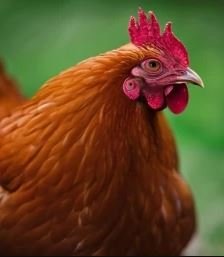
Rhode Island Hen Appearance:
Rhode Island chicken Colors: Slightly lighter mahogany red compared to roosters.
Size, Weight, and Shape: Weigh between 6.5 and 7.5 pounds, with a rounded, full-bodied shape.
Comb and Wattles: Medium-sized, single comb; red wattles, smaller than the rooster’s.
Eye Color and Shape: Orange-red eyes, similar to the rooster but less pronounced.
Rhode Island Red Eggs
Rhode Island Red Eggs Color
The eggs are typically a light brown color.
Know about 7 blue egg-laying chickens.
Rhode Island Red Egg Production
These are renowned for their excellent egg production:
- Weekly: Approximately 5-6 eggs.
- Monthly: Around 20-24 eggs.
- Yearly: About 250-300 eggs.
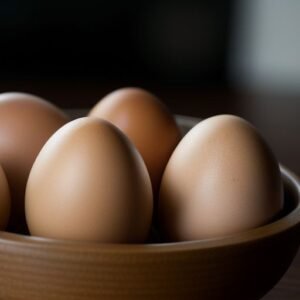
Rhode Island chicken Egg Size
The eggs are generally large, weighing around 2-2.5 ounces each.
Rhode Island Red Eggs Benefits
Health Benefits
Nutrient-Rich: Eggs are high in protein, vitamins, and minerals, providing essential nutrients for a balanced diet.
Good for Heart Health: These eggs contain beneficial omega-3 fatty acids, which help support heart health.
Boosts Brain Function: Rich in choline (an essential nutrient), Rhode Island chicken eggs support brain health and cognitive function.
Financial Benefits
Cost-Effective: High egg production means less need to purchase eggs, making it cost-effective for household use.
Sell Eggs: The surplus eggs can be sold, generating a steady income.
Breeding: Selling chicks or fertilized eggs can be a lucrative business, offering additional financial benefits.
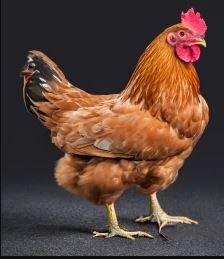
Rhode Island Red Rooster
Rhode Island Red Temperament
Rhode Island roosters are known for their active and sometimes aggressive nature, particularly when it comes to protecting their flock. They are alert and can be territorial. However, with consistent handling and proper care, they can be tamed and become more docile around humans.
4-Week-Old Rhode Island Red Rooster
At four weeks, Rhode Island Red roosters are rapidly growing. They begin to develop their first set of true feathers, and their comb and wattles start to become noticeable. They are very active and require a safe, warm environment to continue thriving.
6-Week-Old Rhode Island Red Rooster
At six weeks, Rhode Island Red roosters are still considered chicks. They have more feathers and a small but developing comb. This stage is marked by increased energy and curiosity as they explore their surroundings. Proper nutrition and care are crucial to support their rapid growth.
4-Month-Old Rhode Island Red Rooster
At four months, Rhode Island roosters are close to reaching sexual maturity. Their comb and wattles are more pronounced, and they start to display their characteristic mahogany plumage. They may begin to exhibit more dominant behaviors as they mature.
Full-Grown Rhode Island Rooster
At six months, Rhode Island roosters are typically sexually mature and fully grown. They exhibit a rich mahogany color, a large comb, and a robust body. They weigh between 8.5 and 9.5 pounds and are actively involved in breeding. Their protective instincts are strong, making them vigilant guardians of their flock.
Rhode Island Red Hen vs Rooster
Size and Weight
- Roosters: Larger, typically weighing between 8.5 and 9.5 pounds.
- Hens: Smaller, usually weighing between 6.5 and 7.5 pounds.
Comb and Wattles
- Roosters: Have larger, more pronounced combs and wattles, which are bright red.
- Hens: Feature smaller combs and wattles, also red but less prominent than those of roosters.
Temperament
- Roosters: More aggressive and protective, especially towards potential threats to the flock.
- Hens: Generally calmer and more docile, making them easier to handle.
Egg Production
- Hens: Prolific layers, capable of producing up to 300 eggs per year.
- Roosters: Do not lay eggs but are essential for fertilizing eggs to ensure successful breeding.
Rhode Island Red Chicks
Rhode Island Red Chick Appearance
Rhode Island chicks are typically yellow to light brown with a soft, fluffy down covering. As they grow, they develop their characteristic red feathers, which gradually replace the chick down.
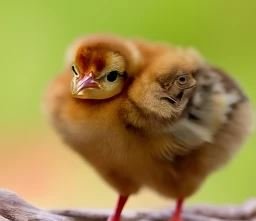
Caring for Rhode Island Red Chicks
Nutrition and Feeding
- Starter Feed: Provide a high-quality chick starter feed that is rich in protein to support rapid growth.
- Clean Water: Ensure they have constant access to clean, fresh water.
Housing
- Brooder Setup: Keep chicks in a warm, safe brooder with a heat source, such as a heat lamp, to maintain a temperature of around 95°F for the first week, gradually decreasing as they grow.
- Bedding: Use absorbent bedding like pine shavings to keep the brooder clean and dry.
Discover complete diet and house setup for chicks while knowing about leghorn chicks.
Interesting Facts About Rhode Island Red Chicks
- Rapid Growth: Chicks grow quickly and start developing their distinctive red feathers within a few weeks.
- Hardiness: These chicks are known for their resilience and can adapt well to various environments.
- Temperament: Rhode Island chicks are active and curious, making them entertaining to watch as they explore their surroundings.
Rhode Island Red Chicks Price
The price for Rhode Island Red chicks varies based on location and breeder, typically ranging from $3 to $5 per chick.
Where to Buy Rhode Island Red Chicks for Sale
Local Breeders
- Check Local Farms and Poultry Breeders: Many farms and breeders specialize in Rhode Island Reds and can provide healthy chicks.
- Agricultural Fairs and Poultry Shows: These events often feature breeders selling a variety of poultry, including Rhode Island Reds.
Online Platforms
- Meyer Hatchery: A well-known source for purchasing Rhode Island chicks online.
- McMurray Hatchery: Offers a wide range of poultry, including Rhode Island chickens.
- Cackle Hatchery: Another reputable online hatchery for buying Rhode Island chicks.
- Online Poultry Forums and Marketplaces: Websites like Backyard Chickens and Poultry Show Central often have listings from breeders selling chicks.
Conclusion
Rhode Island Reds stand out as a versatile and valuable breed in poultry farming. With their robust nature, prolific egg-laying capabilities, and distinctive appearance, they continue to be a favorite among breeders and backyard enthusiasts alike. If you’re drawn to their rich mahogany plumage, their reliable egg production, or their adaptive temperament, Rhode Island chickens prove to be an excellent choice for both novice and experienced poultry keepers. Their historical significance and enduring popularity underscore their enduring appeal in the world of poultry farming.
What Does a Rhode Island Red Rooster Look Like?
A Rhode Island Red rooster is characterized by its rich mahogany plumage, large single comb, and red wattles. It has a robust, upright posture and a broad chest.
How Much Does a Rhode Island Red Rooster Cost?
The cost of a Rhode Island Red rooster can vary, typically ranging from $10 to $25, depending on the breeder and the rooster's quality and age.
How to Take Care of Rhode Island Red Chicks?
- Brooding: Provide a warm brooding area with a temperature of around 95°F for the first week, decreasing by 5°F each week.
- Feeding: Offer chick starter feed with 18-20% protein.
- Water: Ensure constant access to clean, fresh water.
- Housing: Provide secure, predator-proof housing with enough space for growth.
Where to Buy Rhode Island Red Chicks for Sale?
- Local Options: Visit local farms, agricultural fairs, and breeders.
- Online Stores: Trusted sites like Meyer Hatchery, McMurray Hatchery, and Cackle Hatchery.
- Poultry Forums: Engage with poultry enthusiasts on online forums and marketplaces.
How to Sex a Rhode Island Red Chicken?
- Feather Growth: Male chicks develop feathers faster, particularly in the neck and saddle areas, compared to females.
- Behavior: Roosters may display more assertive behavior early on, while hens tend to be calmer.
- Comb and Wattles: Males typically have larger and more pronounced combs and wattles.
- Size and Shape: Rooster chicks often have thicker legs and larger feet.
- Vocalization: Roosters may start crowing earlier than hens, usually around 3-4 months of age.
